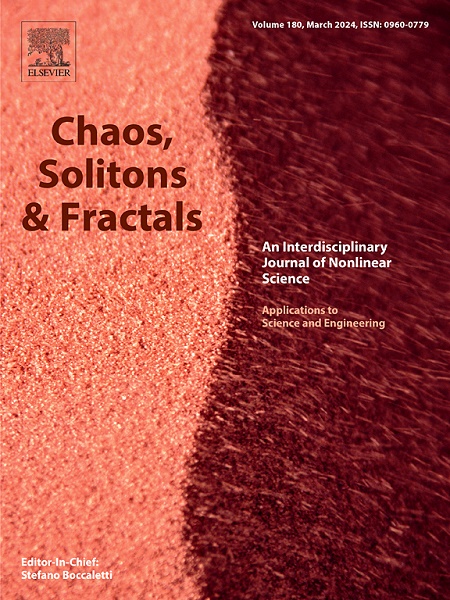疾病是如何在危急状态下传播的?
IF 5.3
1区 数学
Q1 MATHEMATICS, INTERDISCIPLINARY APPLICATIONS
引用次数: 0
摘要
接近临界阈值的传染病传播特征对于制定公共卫生战略至关重要。本研究采用具有非线性和饱和发病率的反应扩散SI模型,结合最优控制理论研究临界条件下的流行病传播趋势。利用空间熵方法定量表征了三种流行病学目标状态(灭绝、准均匀流行和模式流行)的结构复杂性。多指标比较分析从目标可达性、平均控制强度和控制复杂性三个维度系统揭示了疫情在关键状态下的演化趋势。研究结果表明,与灭绝和准均匀状态相比,达到模式流行状态所需的控制强度和空间干预复杂性最低,表明临界状态下的流行病系统更倾向于结构化传播模式。提出的空间结构和控制复杂性量化框架为制定传染病临界状态空间防控策略提供了理论依据和实践指导。本文章由计算机程序翻译,如有差异,请以英文原文为准。
How do diseases spread at the critical state?
The transmission characteristics of infectious diseases near critical thresholds are essential for public health strategy formulation. This study employs reaction–diffusion SI with nonlinear and SIR models with saturated incidence rates, integrating optimal control theory to investigate epidemic propagation trends under critical conditions. The structural complexity of three epidemiological target states (extinction, quasi-uniform epidemic, and patterned epidemic) is quantitatively characterized using spatial entropy methods. A multi-indicator comparative analysis systematically reveals the evolutionary trends of epidemics in critical states from three dimensions: target attainability, average control intensity, and control complexity. The findings indicate that achieving a patterned epidemic state requires the lowest control intensity and spatial intervention complexity compared to extinction and quasi-uniform states, suggesting that epidemic systems in critical states are more inclined toward structured transmission patterns. The proposed framework for quantifying spatial structure and control complexity provides a theoretical basis and practical guidance for formulating spatial prevention and control strategies for infectious diseases in critical states.
求助全文
通过发布文献求助,成功后即可免费获取论文全文。
去求助
来源期刊

Chaos Solitons & Fractals
物理-数学跨学科应用
CiteScore
13.20
自引率
10.30%
发文量
1087
审稿时长
9 months
期刊介绍:
Chaos, Solitons & Fractals strives to establish itself as a premier journal in the interdisciplinary realm of Nonlinear Science, Non-equilibrium, and Complex Phenomena. It welcomes submissions covering a broad spectrum of topics within this field, including dynamics, non-equilibrium processes in physics, chemistry, and geophysics, complex matter and networks, mathematical models, computational biology, applications to quantum and mesoscopic phenomena, fluctuations and random processes, self-organization, and social phenomena.
 求助内容:
求助内容: 应助结果提醒方式:
应助结果提醒方式:


